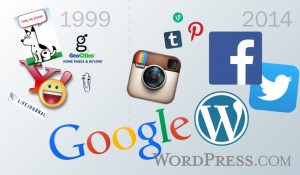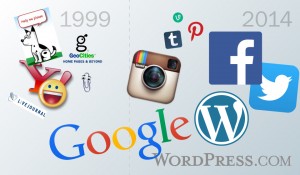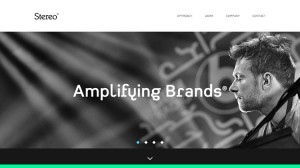The Internet has changed a lot in the last 20 years. From Yahoo! Chat Rooms to Facebook, Dogpile to Google, GeoCities to Wordpress.com, and Yahoo! Photos to Instagram, the World Wide Web has matured at a blazing-fast rate, and this has left some early adopters dust. Many ideals about what made a profitable site in the late 1990's would be considered a cheat sheet for how NOT to build a website today.
Unfortunately, having grown up with these websites ourselves, it can sometimes be difficult to recognize that our website is out of date or not following modern best practices. Trends change all the time, and it's hard to know which ones will yield the best results. So how do we stop ourselves from falling into the pitfalls of out-dated website design?
A good strategy for building a website that looks like it belongs in this decade is to recognize design trends that can 'date' your website. Even though the design itself can vary greatly, these trends share common elements that immediately inform visitors when your last website design update took place.
The Big Four
Although many Internet 'fads' have come and gone, there are four major categories of website design trends upon which the majority of today's websites were built. These schools of web design 'thought' created the Internet as we know it and continue to influence the modern web experience.
Web 1.0
Web 1.0 is how we might describe the style associated with websites built before 2003, and although the actual design elements (color, layout, images, etc.) vary greatly, they all share certain common features: Static web pages, built with tables and HTML 1.0, designed for low screen resolutions, web-safe colors, blue underlined hyperlinks and 8-bit jpegs, gifs & animated gifs. We typically imagine web 1.0 sites as looking something like this:
Although they can be somewhat nicer than that, for instance:
Web 2.0
Web 2.0 is how we describe sites built between 2003-2010. These sites tend to be more dynamic, with rich interfaces, rounded corners, gradients and drop shadows. Liberal use of Java, CSS and Flash technologies, as well as high resolution images intended for larger screens are typical of Web 2.0 websites. They are usually built on server-side scripts with dynamic pages (PHP, ASP, MySQL, etc.), and they often feature a 'mobile' version (e.g. m.mysite.com). Some examples of web 2.0 websites:
http://www.fresnocitycollege.edu/
http://www.thesims3.com/
Skeoumorphic Design.
The Skeoumorphic web design trend was a short-lived (2010-2012) trend that employed 'realistic' visual characteristics with the intention of invoking familiarity and comfort. This is a bold, expensive and very difficult to maintain design approach that is primarily employed by designers, restaurants, musicians and artists. Some examples:
http://jackjohnsonmusic.com/
http://www.teamfannypack.com/
Flat Design
Flat design is the current trend in web design. It's characterized by the elimination of graphical elements that have no significant value. The result is simple, open spaces with bright colors, two dimensional illustrations and a strong focus on usability. This approach has significant benefits when it comes to mobile. This would be a recommended design approach for most newly built websites or website redesigns. Although the trend likely won't last forever (designers everywhere are already working on the next 'trend') the principles behind flat design are sound and should provide your site with a modern appearance and a superior user experience for years to come. Examples of flat design:
http://evernote.com/
http://www.chimneygroup.com/
The moral of the story: Stay abreast of major web design trends, and if you don't update your site regularly, expect to need a web design overhaul at least once every 2-4 years or so. You can sometimes manage to delay the process a little while longer, but if you wait too long the only people visiting your website will be the Internet paleontologists.






